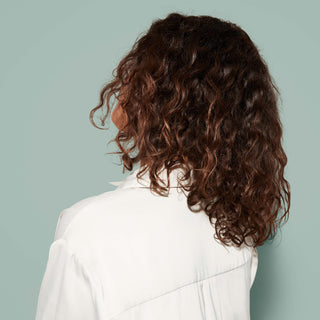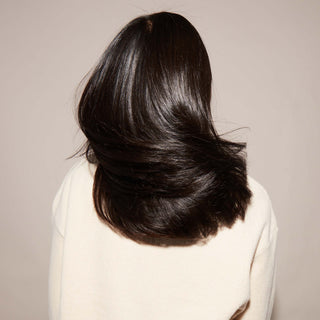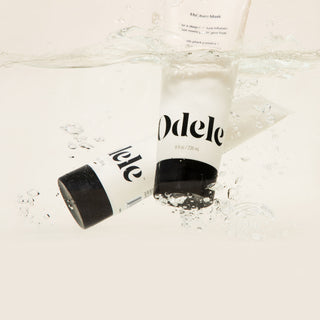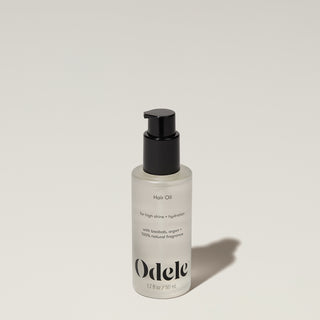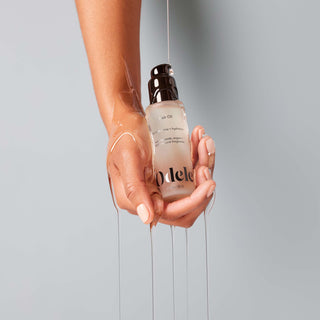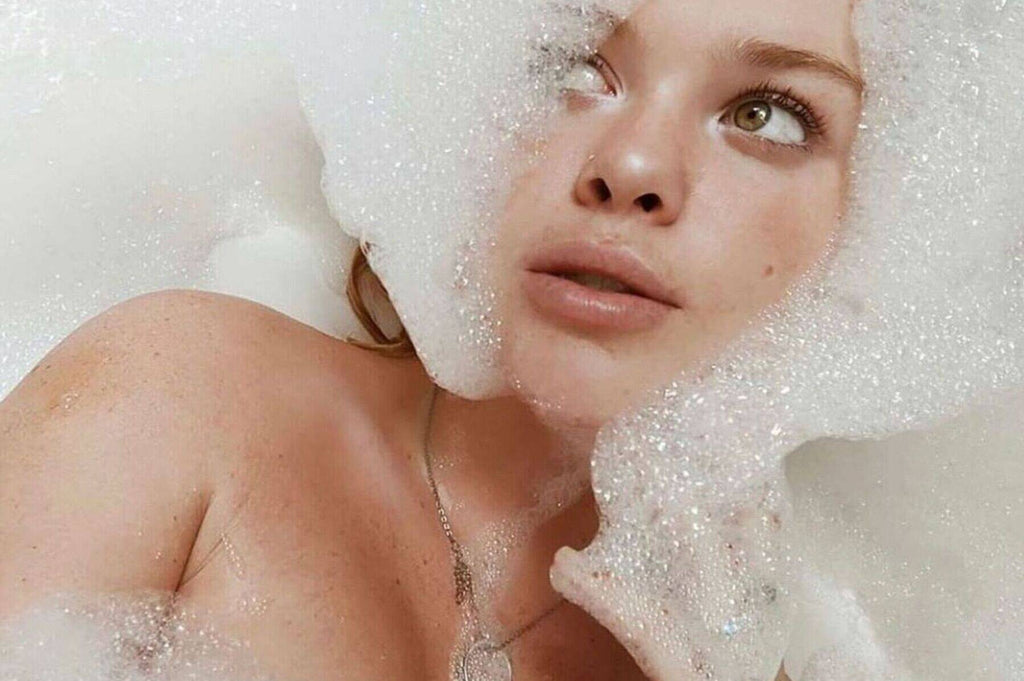Fed up with frizz? We feel you—there’s nothing more frustrating than finally perfecting your style, only to watch it go poof minutes later.
While frizzy hair is still beautiful (don’t let anyone tell you otherwise!) and at times has its benefits (how else would we pull off messy buns and full ‘fros?), it could also be a sign that your hair needs something it’s not getting (spoiler alert: moisture).
Read on to learn all about the science of how and why frizz happens, and what it might be telling you about the health of your hair.
Why is my hair so frizzy?
How frizzy your hair gets depends first on your hair porosity, which is just a fancy term for how well your hair is able to absorb and hold moisture. Your hair porosity is determined by how open (aka porous) the outer layer of your hair strand (aka cuticle) is.

Think of the cuticle as the bouncer of the hair shaft—it protects the inside from damage and determines how much moisture is able to get into the cortex (the part that’s responsible for the strength, color and texture of your hair).
The cuticle is made up of a bunch of overlapping cell layers (they kind of look like tree bark) that need to be spaced just right to allow water, oils and other ingredients to enter and nourish the hair shaft. When they’re properly spaced, the hair is said to have normal, or medium, porosity.
If those layers are too open (high porosity), it’s easy for moisture to enter but hard for it to stay in. The consequences? Perpetually dry, thirsty locks. If they’re too tightly sealed (low porosity), it’ll be hard for moisture to get in at all, also resulting in dry, thirsty hair. (Not sure where you fall on the porosity spectrum? Here’s how to find out.)

Hair porosity is largely genetic, but how well you care for your hair also plays a big part. Damage from styling, chemical treatments, heat, etc. weakens the cuticle―causing it to fray and open up over time. Curly and coily textures are also unique in that they naturally have a more raised cuticle.
So, what does porosity have to do with frizz? When your hair is thirsty (or if it doesn’t retain moisture well), it will drink up any moisture in the air―and that, dear friends, is why humidity (literally) takes our frizz to new heights.

How does humidity cause frizz?
We now know why humidity causes frizz (because the hair thirst is real), but how exactly does it work?
To understand that, let’s zoom in on a single strand.
Beneath the cuticle lies the cortex, which is made up of a protein called keratin, bundled layer after layer. Keratin makes hair strong and gives it its structure (straight, wavy, curly, coily). The glue that holds those layers of keratin together is a combination of strong and weak chemical bonds:
Humidity happens when there’s water in the air, and water molecules contain hydrogen atoms (the “H” in H20). When the weather’s muggy, your hair absorbs the water and forms a bunch more of those hydrogen bonds we mentioned above―causing it to swell and lose its defined shape. Multiply that strand by a whole head of hair and, voilà, you get frizz. (Fun fact: Human hair is so sensitive to humidity that some devices actually use it to measure the weather―wild, right?)

What does electricity have to do with it?
Your hair, like everything else on your body (and in the world!), is made up of charges. Think back to fifth-grade: Opposite charges attract each other (negative-positive). Like charges repel each other (positive-positive or negative-negative). Most of the time, positive and negative charges are balanced in an object, which makes that object neutral.
When there’s an imbalance between negative and positive charges, static electricity happens―building up on the surface of an object (or your hair) until those charges find a way to be released or neutralized. All kinds of things can make your hair build up a static charge: friction from your brush, pillowcase or hat, humid air, heat, etc. Damaged hair fibers also have a higher negative charge.
What happens when two hairs of like charge come in contact? They repel each other―hello, flyaways. Your strands then start to separate, leaving your head full of frizzies.
Once again, moisture is key to combating this effect. Water helps make hair more conductive, meaning it can spread out the charge more evenly instead of letting it build up and balloon into frizz.

How to prevent and reduce frizz (naturally)
Now that we’ve gone deep into the root causes of frizz, here are some hair care tips to help you maintain a healthy moisture level and stay smooth.
Say “no” to sulfates. Stick with sulfate-free shampoos to avoid stripping moisture from your mane.
Say “yes” to silicones. Silicones have smoothing, softening, shine-enhancing properties that work actual wonders on frizzy tresses. If you’re iffy about silicones, know that they’re safe for hair―and double as a heat protectant, too! We use the highest quality silicones in our products—they’re far milder (yet much more effective!) than traditional silicones.
Figure out the right washing frequency. Shampooing too often can dry out and damage your hair cuticles. If you think you might be lathering up too much, you can follow these tips to figure out how often you should wash your hair.
Turn down the heat. Wash with warm, not hot, water to avoid stripping your strands. Consider finishing with a cold rinse to better seal your hair cuticles.
Always condition. Conditioner is so important for replenishing any moisture lost during shampoo―particularly if you deal with perpetually dry locks.
Apply styling products while your hair is still damp. It’ll help you lock in mega-moisture for a frizz-free finished look.
Press―don’t rub―your hair dry. Vigorously towel-drying your hair creates friction―a fast track to frizz. Instead, gently squeeze your hair with a microfiber towel or cotton t-shirt to absorb excess water.
Lock in moisture with a good leave-in conditioner. Leave-in conditioner is a must for dry, frizz-prone hair!
Style with sea salt. Salt-based sprays are great for achieving that tousled, bedhead look―minus the frizz that typically comes with it.
Skip the brush. Particularly with curly and coily hair, try finger combing when you’re going for a sleeker finish.
Drink plenty of water. Your H20 intake affects your hair’s hydration, too. Not sure if you’re hydrating enough? Divide your weight in lbs by 2 and you’ll get the number of water ounces you should be downing daily.
Shield your hair with silk. Sleeping with a silk pillowcase or headwrap minimizes friction and moisture loss, keeping frizz at bay while you dream the night away.



